As a massive wildfire roars up the Athabasca River Valley, an evacuated community waits on fire officials—and the weather—to turn the tide
“One of Canada’s most iconic natural landscapes is on fire,” Jasper National Park Superintendent Alan Fehr said on July 23 at a 1 p.m. press briefing.
Sixteen hours earlier, on July 22 at 7 p.m., JNP section chief and fire management officer Katie Ellsworth received a report of a wildfire 9 kms east of the Jasper townsite. It was the sixth wildfire of the season—four of five had been extinguished. The report said it was near the Jasper Transfer Station. The Jasper dump had been a place of one of the season’s earlier fires—smouldering woody debris had come to life in a wind storm. On that fire, the wind that gave it life died down soon after. Not so on Monday night. Aspens were bending like bows and Jasper’s forests of dead pine were shaking with each erratic gust.
“Winds were gusting upwards of 20-30 kilometres per hour in Jasper, and it was hot,” Ellsworth told reporters. “Thirty plus degrees-Celsius with maximum 20 percent humidity.”
Half an hour later, while assistant fire management officer Clayton Praill and JNP’s Type One initial attack (IA) fire crew was assessing the north fire and discussing the situation with Ellsworth, another wildfire report came in. This one was reported near Kerkeslin Campground, about 30 kilometres south of Jasper.
Then, 10 minutes after that, another fire was called in. It was at Leach Lake. Further south—but just barely.
“The situation unfolded very quickly,” Ellsworth said.
In a year where Jasper National Park has welcomed more visitors than ever before, at just before 8 p.m. in July, the Jasper townsite teems with activity.
Tourists and locals alike fill the streets. Kids slurp ice cream on the Information Centre lawn, servers set down trays full of drinks, people from all over the world shop, make dinner reservations, return bike rentals and struggle to pay for parking. Rafting buses share Jasper’s two main drags with motorhomes, cyclists and barricaded tables. On a Connaught Drive patio in plus 30-degree heat, an hour can seemingly evaporate faster than a pint is poured.
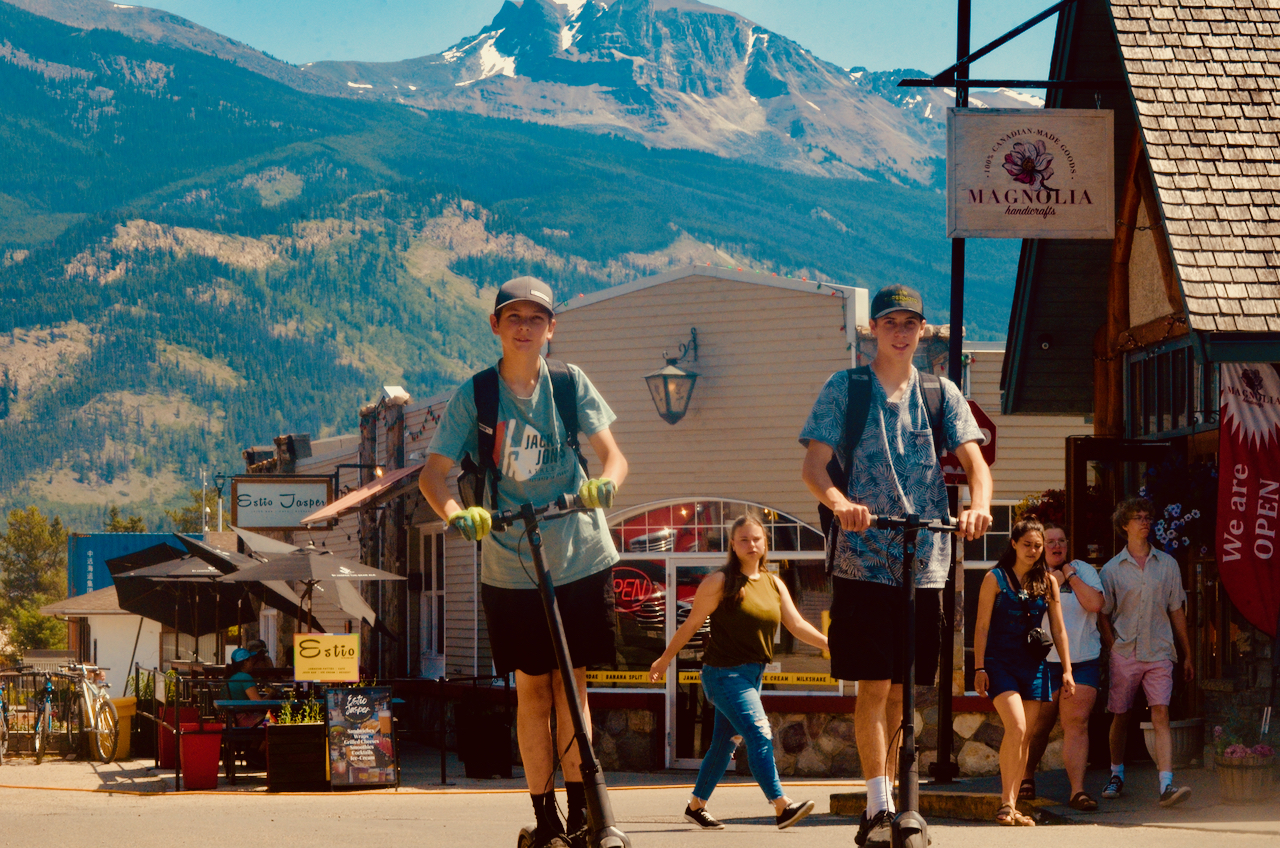

A critical hour
Overhead of those patio revellers, in the 60 minutes since the north fire had been reported and Praill and the JNP IA team began attacking the north fire—with active bucketing from helicopters that were in Jasper on stand by—and with another Type 1 IA crew from Terra Nova National Park having started fighting the south fire…combined with the wind, the humidity, the extreme fire conditions…by 8 p.m., Ellsworth had seen enough. It was clear to her that it was time to activate an evacuation alert.
“These fires were exhibiting aggressive, aggressive fire behaviour,” she said.
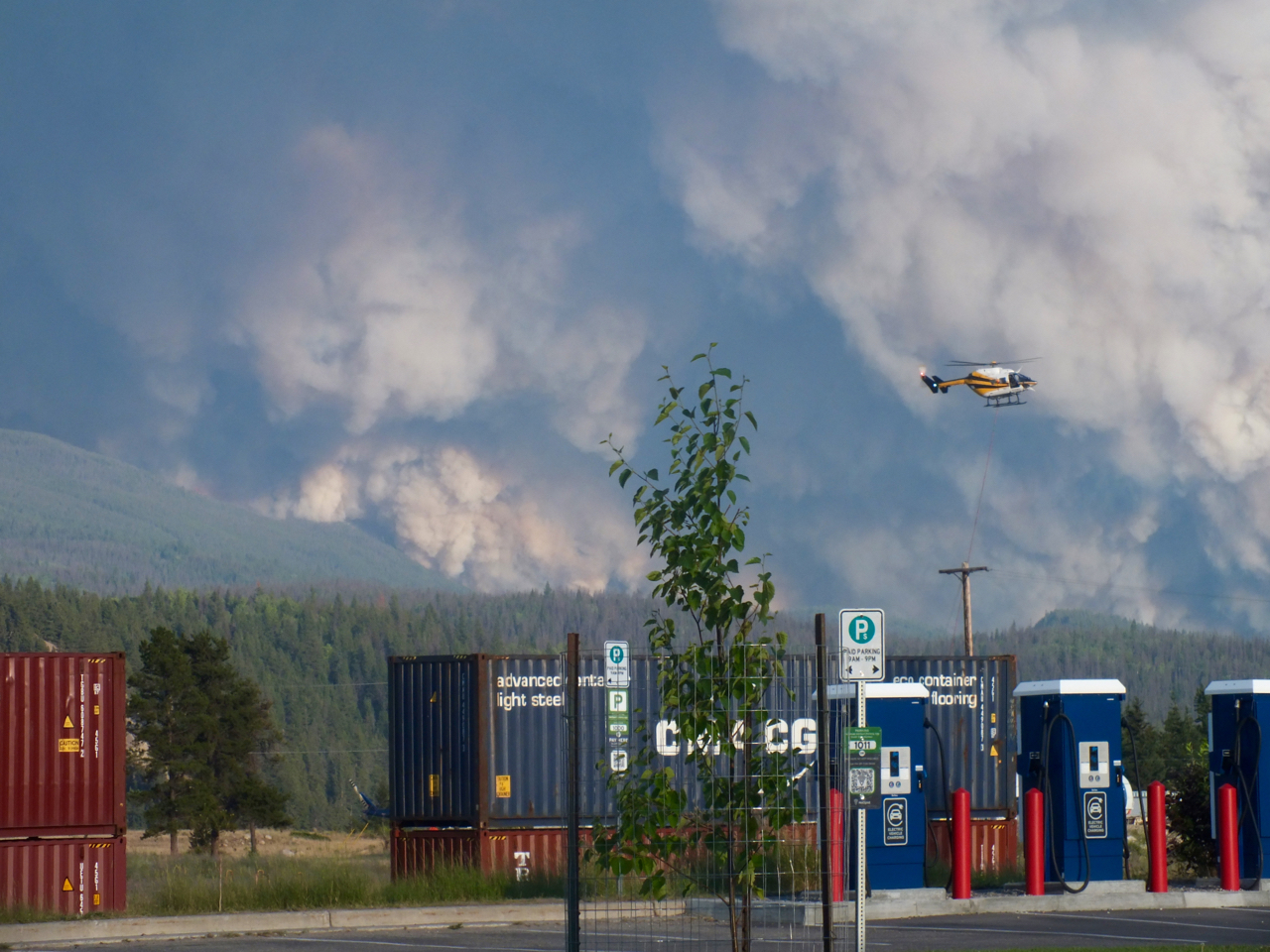
By calling for the evacuation alert at 8 p.m., Ellsworth said officials were trying to give residents and visitors as much time as possible to prepare for an evacuation order, if needed. Unfortunately the wind had other ideas.
“It was really quickly, very apparent, that life safety needed to come first and we needed to begin evacuation immediately,” Ellsworth said.
Ellsworth at that point had a discussion with Fehr and other community officials. Her recommendation was that the evacuation alert be changed to an evacuation order.
While the evacuation of between 20-25,000 residents and visitors unfolded, Parks Canada and Alberta Wildfire resources began to congregate. Approximately 240 wildfire personnel have now been assembled. Seven aircraft, four dozers, six water tenders, seven structural protection crews and three structural protection specialists have been brought into Jasper, with new resources constantly cycling in.
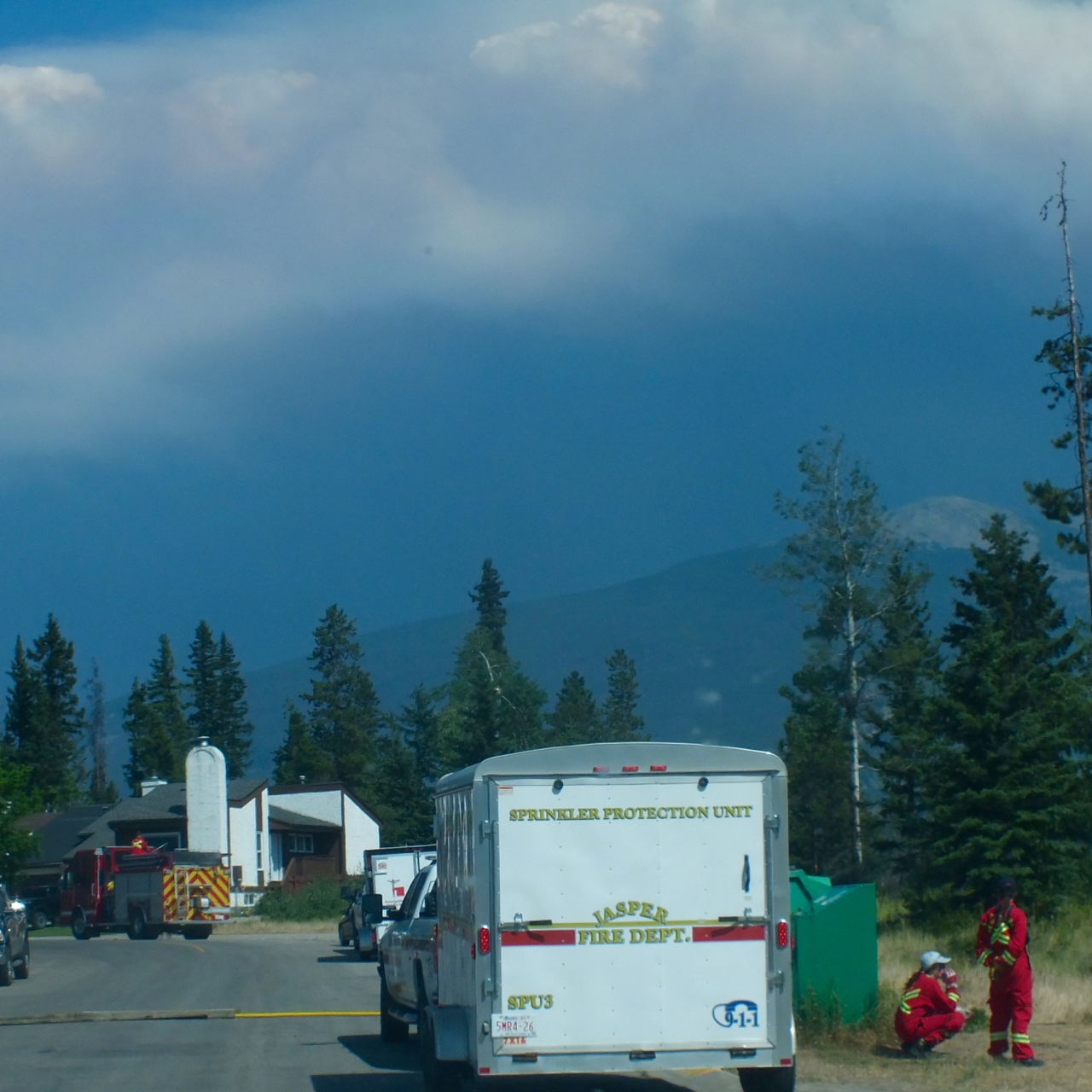
Air tankers have been dropping retardant and water on both fires. The downside is that, for safety reasons, the tanker flights frequently interrupt the ability for the helicopters to fly, making it increasingly difficult for incident commanders to get a grip on how big the fires actually are.
“The smoke conditions…make it challenging to fly to the main fire area,” Ellsworth said.
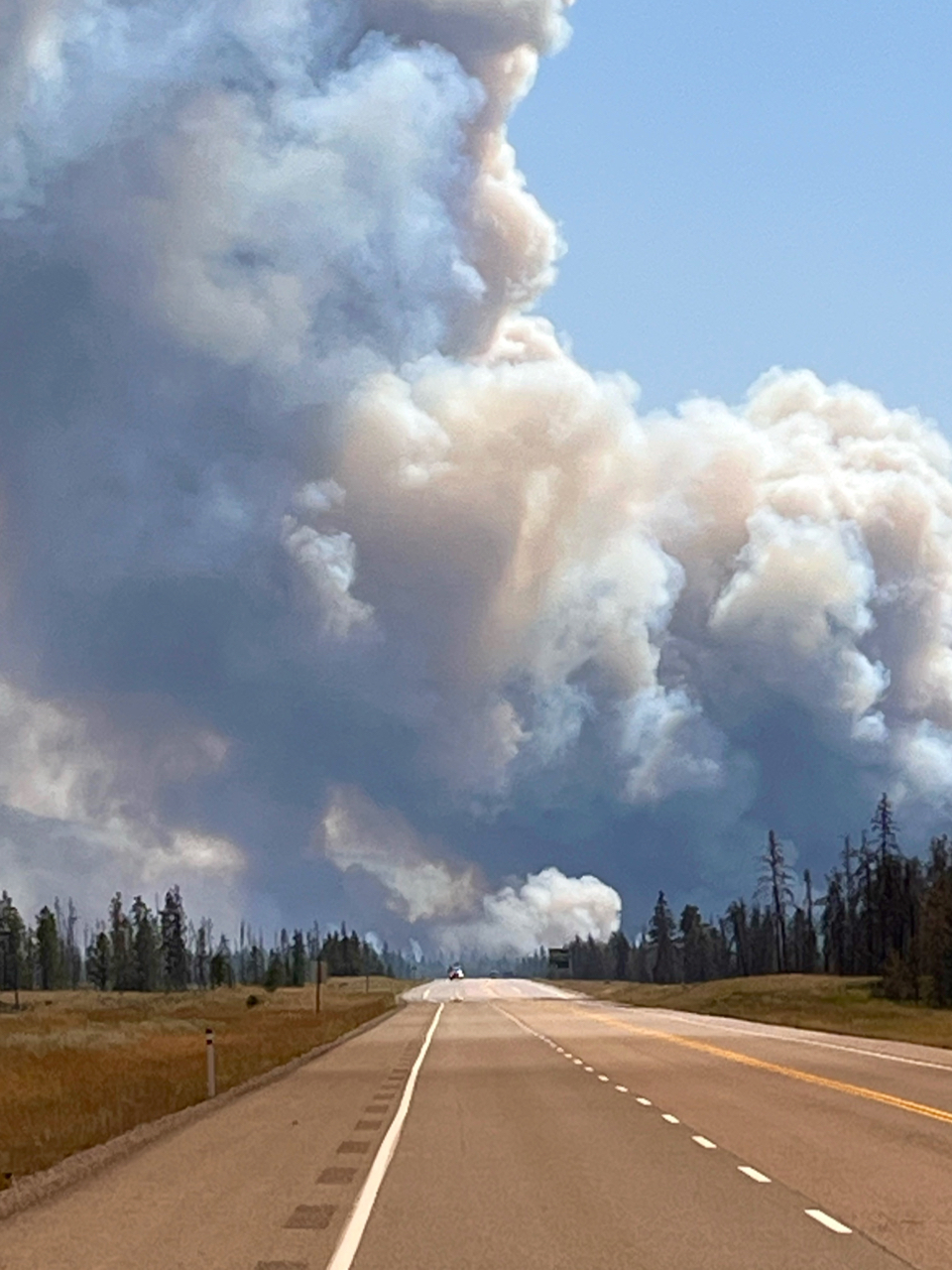
Pyroculumous clouds resemble thunderheads and can go up to 50-60 thousand feet into the air. Heated water vapour, burning embers—they are a law unto themselves, and scientists have likened their energy to that of an atomic bomb.
The south fires that started near Kerkeslin Campground and Leach Lake respectively on July 22 combined on July 23 into one massive fire, the total burned area of which is at minimum 7,600 hectares, and the leading edge of which is only 12 kms from the townsite, officials said.
On July 23 columns of smoke towered over the townsite, making area mountains look small in comparison. Appearing in and out of the dark haze, Parks Canada-commissioned helicopters buzzed over the Maligne Range, but instead of scooping buckets of water, these helicopters were scooping up passengers—backcountry campers on Jasper’s renown Skyline Trail, where a lack of cell service and a 44 km hike impede users’ ability to make contact with the world.
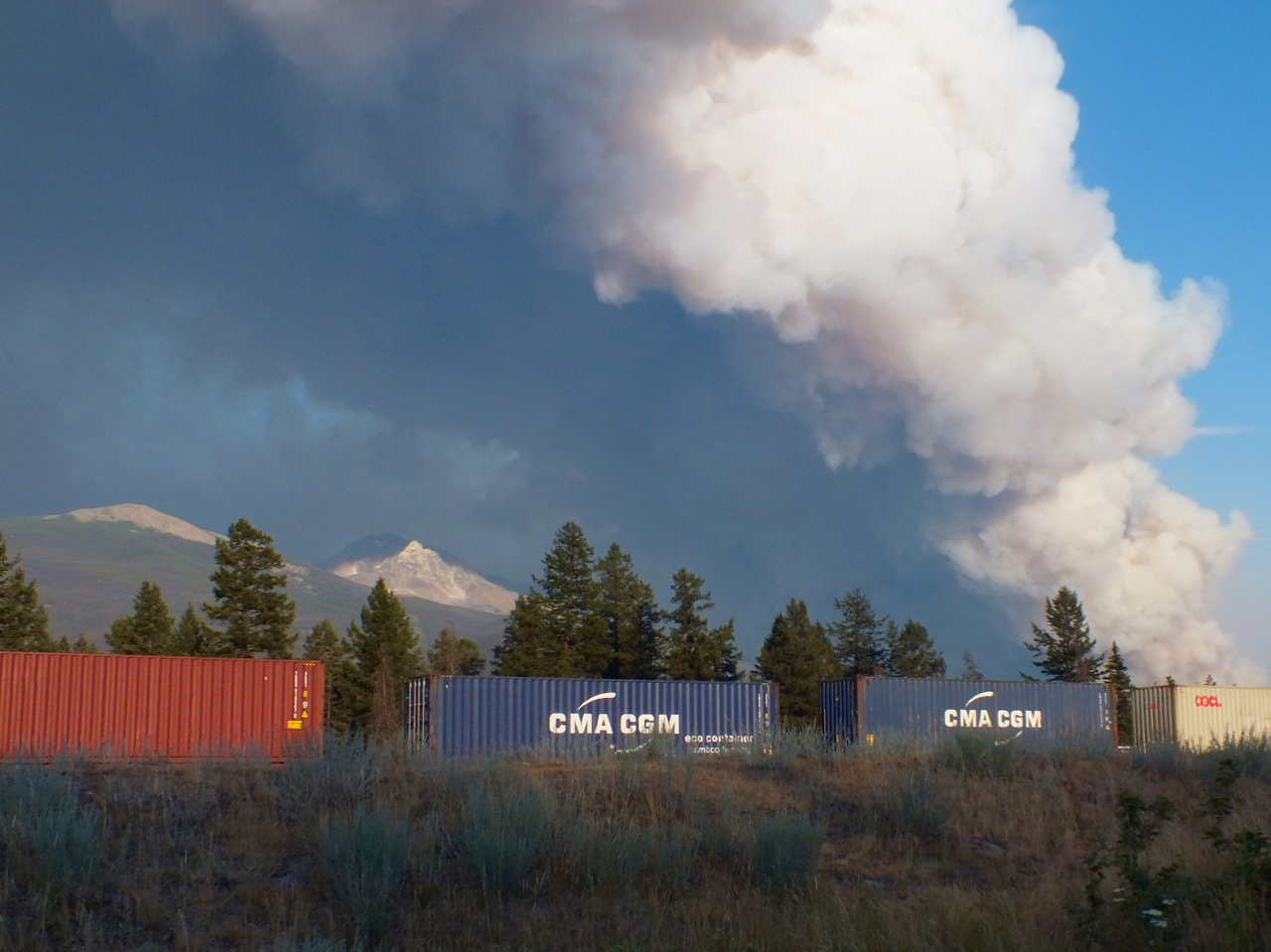
Jasper didn’t have exact figures on the number of hikers were in its various backcountry zones on July 23, but Ellsworth could confirm that the Skyline Trail was cleared, and that visitor safety staff were working on air-lifting hikers from the Tonquin Valley, North Boundary and South Boundary Trails. They were expecting that operation to be completed by that evening, she said.
“They’re picking them up in safe landing zones and flying them back out,” Ellsworth said.
Those evacuees will join the thousands of others who fled the fires in the last 36 hours, for the most part driving west to Valemount, where the community has opened its arms—and its campgrounds, its restaurants, and its bathrooms—to hundreds of visitors, but especially to Jasperites. Ellsworth’s own family was among those welcomed by Valemounters, and she extended a personal thanks to the residents of the normally-sleepy village.
Jasper Mayor, Richard Ireland, reiterated the message of gratitude to its Rocky Mountain neighbour.
“We appreciate what an overwhelming situation we presented to you last evening,” he said. “Between the time of the evacuation order and the first arrivals in Valemount was probably just more than an hour. You were there and did a wonderful job and we certainly thank you for that.”
Bob Covey // bob@thejasperlocal.com


